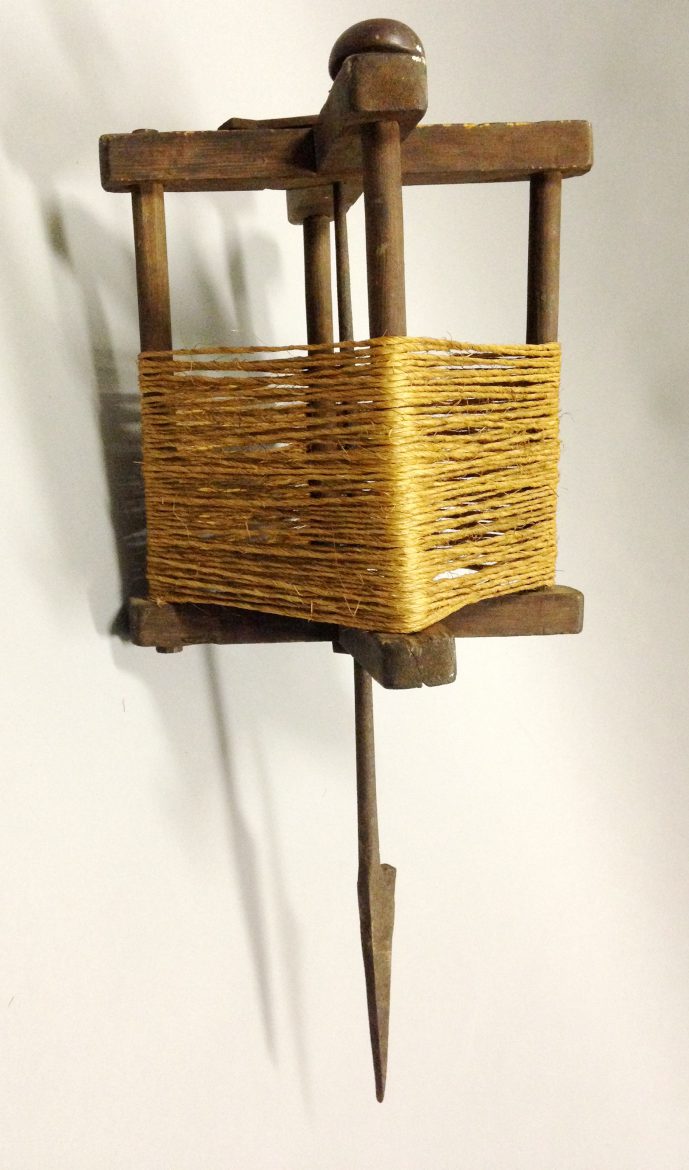
String Reel, Church Family, Mount Lebanon, NY, mid-19th c., Shaker Museum | Mount Lebanon: 1950.990.1. Staff photograph.
It is that time of year again – time, or past time for planting gardens. The North Family at Mount Lebanon generally began planting their gardens with hearty plants in early May. The amount of vegetables planted both for seed production and to feed the largely vegetarian family was staggering. For example, on May 12, 1886, […]
It is that time of year again – time, or past time for planting gardens. The North Family at Mount Lebanon generally began planting their gardens with hearty plants in early May. The amount of vegetables planted both for seed production and to feed the largely vegetarian family was staggering. For example, on May 12, 1886, the keeper of the garden journal at the North Family noted that the gardeners:
Finished covering the Yellow Danvers Onions in the North Garden & set out The Yellow Dutch along the north wall in the West Sand knoll lot; they filled 10 rows with one row of White Elephant Potatoes next [to] the wall; this finished the onion setting; sowed 14 rows of Parsnips lower side of First garden. Began planting Potatoes in the Upper Cabin lot, plowing the South garden, &c.

String Reel, Church Family, Mount Lebanon, NY, mid-19th c., Shaker Museum | Mount Lebanon: 1950.990.1. Staff photograph.
These rows could be up to one hundred feet long. To keep the rows straight and spaced properly, the Shakers, like many others, used string to set their seeds, onion sets, and seed potatoes. The two string reels in the Shaker Museum’s collection were likely used for this purpose. Both reels seem to have been made by the Shakers. One reel could be set on the ground and anchored with a weight. The string was drawn out of a mouth that kept the string near the ground. The second reel had an iron spike at the end of its shaft to allow it to be anchored in the ground. Both reels have crank handles to rewind the string.

String Reel, Church Family, Mount Lebanon, NY, mid-19th c., Shaker Museum | Mount Lebanon: 1950.1220.1. Staff photograph.
While the reels certainly could have been used for planting, another possible use for such reels should be mentioned. The Shakers – all four families that raised garden seeds for sale – would have grown onions with the intention of letting them go to seed so they could offer onion seed to their customers. The seed pods grow at the top of the stalks and when the pods become full they tend to bend the stalks over. That works well for the onion trying to reseed itself, but is not so great for gathering the seed. The Shakers “lined their onions,” that is, they ran two lines of string along either side of the stalks to keep them from falling over. The keeper of the North Family garden journal mentioned that on June 24, 1880 they weeded the parsnips, “having finished the Onion lining,” and about a month later recorded that they were “raising the onion lines.” Apparently by the end of June the onions had grown enough to need to have the stalks supported and by the end of July the lines needed to be raised higher. By the beginning of September they had “finished cutting the Red Onion put it in the garden house lofts.” Since generally onions are “pulled” to be eaten, this must refer to the cutting and drying of the onion seed.
Agriculture was such an important part of the Shakers’ daily life; it is always enjoyable to find objects in the Museums’ collection that are related to that work. Good luck with this season’s gardens.